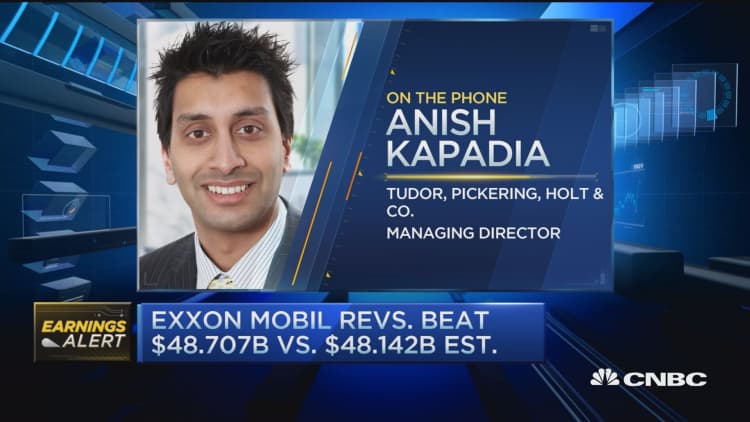


U.S. oil prices dipped on Friday after an early rise to 2016 peaks, but posted a gain of about 20 percent for April, the largest monthly gain in a year.
Futures held losses after oilfield services firm Baker Hughes reported its weekly U.S. oil rig count fell by 11 to 332. At this time last year, drillers were operating 679 oil rigs.
A weaker dollar and optimism that a global oil glut will ease have boosted crude futures about $20 a barrel or more since they plumbed 12-year lows below $30 in the first quarter.
With prices less than $5 away from $50 a barrel, investment bank Jefferies said the market "is coming into better balance" and would flip into undersupply in the second half of the year.
But others warned that the rally was driven by investors holding large speculative positions, while oil stockpiles were still high, with a Reuters survey showing OPEC output in April rising to its most in recent history.
"The issue is that we haven't seen price rallies ... correlate with fundamentals," said Hamza Khan, senior commodity strategist at ING. "The fundamentals - high stocks, high production - haven't changed."
Technical analysts said crude could cruise to $50 a barrel but stiffer resistance before $55 could spark profit-taking on the market's biggest rebound in two years.
Brent crude futures was flat at $48.14 a barrel, after setting a 2016 high of $48.50.
U.S. crude fell 11 cents, or 0.2 percent, to settle at $45.96 after hitting a year-to-date peak at $46.78.
The discount in spot U.S. crude to the next trading month meanwhile whittled to its smallest since January, reducing the advantages of storing oil in the United States for later delivery.
Analysts polled by Reuters raised their average forecast for Brent in 2016 to $42.30 per barrel, the second consecutive month of increases.
Supply from the Organization of the Petroleum Exporting Countries rose to 32.64 million barrels per day (bpd) this month, from 32.47 million bpd in March, according to the survey, based on shipping data and information from sources at oil companies, OPEC and consultants.
The OPEC survey aside, Saudi oil output was expected to edge up by 350,000 barrels to around 10.5 million barrels per day, sources told Reuters, as tankers filled with unsold oil floated at sea seeking buyers.
Also on Friday, Libyan officials said the country's National Oil Corporation has ambitious plans to restore output to pre-2011 levels after years of violence and disruption.
Oil output is now less than a quarter of the 1.6 million barrels per day Libya pumped before Muammar Gaddafi fell in 2011, and the National Oil Corporation (NOC) in Tripoli hopes to ramp it up swiftly with the backing of a new unity government.
Bank of America Merrill Lynch said in a note that "non-OPEC oil supply is indeed hanging off a cliff", and estimated that global output would contract year on year in April or May for the first time since 2013.
There are also growing risks that production in OPEC member Venezuela could decline. Risk consultancy Eurasia Group said the state was running out of cash to keep its oil pumps running.
"Mounting problems will probably lead to a decline of 100,000-150,000 bpd this year," Eurasia Group said.



